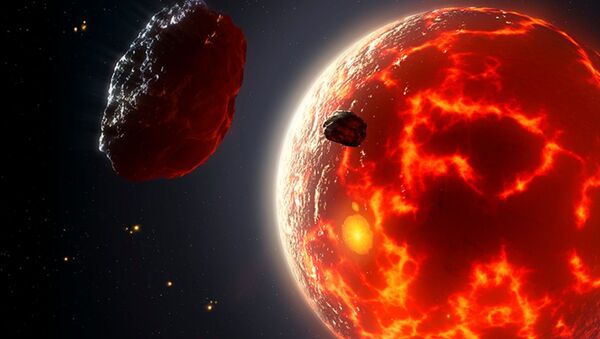New research published in The Astrophysical Journal from scientists at the UK’s University of Sheffield noted that there are many more stars in space that are comparable to our solar system’s sun than expected in the groups of Milky Way stars the study examined, according to the school’s June 5 news release on the matter.
As a result, there is a higher chance of finding “magma ocean planets” - or Earth-like planets still in their early stages of being formed from the collisions of rocks and smaller planets - than previously assumed.
“These magma ocean planets are easier to detect near stars like the sun, which are twice as heavy as the average mass star. These planets emit so much heat that we will be able to observe the glow from them using the next generation of infra-red telescopes,” noted Dr. Richard Parker of the University of Sheffield’s Department of Physics and Astronomy, who led the study.
The school’s release highlighted that other researchers involved in the study were undergraduate students given the opportunity to apply skills previously learned in relevant courses.
“The locations where we would find these planets are so-called ‘young moving groups' which are groups of young stars that are less than 100 million years old - which is young for a star,” the professor added.
“However, they typically only contain a few tens of stars each, and previously it was difficult to determine whether we had found all of the stars in each group, because they blend into the background of the Milky Way galaxy.”
Parker noted that previous observations from the Gaia space telescope assisted researchers in finding additional stars belonging to the aforementioned groups.
The research team now plans to use computer simulations to help explain the origin of the young moving groups of stars.
“Being involved in this project was one of the highlights of our university experience, and it was a great opportunity to work on an area of astronomy outside the typical course structure,” undergraduate students Amy Bottrill, Molly Haigh, Madeleine Hole and Sarah Theakston, of the University of Sheffield’s Department of Physics and Astronomy, said in a joint statement.
“It was rewarding to see a physical application of the computer coding we learnt in our degree by sampling the initial mass distribution of stars and how this can relate to the future of exoplanet detection.”



